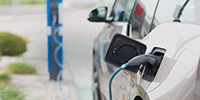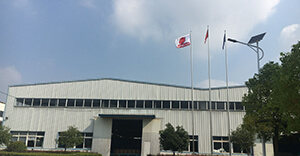Battery Types Used in Wind and Solar Electric Systems
|
In recent years, with the shortage of energy and the impact of environmental pollution, solar energy as a renewable energy has the advantages of cleanliness, safety, and resource adequacy, and has received increasing attention. However, the low conversion efficiency in the photoelectric conversion application of solar energy is always a major obstacle for human beings to fully utilize solar energy. In order to make greater use of solar energy resources and improve utilization efficiency, the research of maximum power point tracking is of great significance for solar power supply systems. A brief overview of the different types of batteries that may be used in solar electric and backup power systems.LEAD ACID The common automobile batteries in which the electrodes are grids of metallic lead-containing lead oxides that change in composition during charging and discharging. The electrolyte is diluted sulfuric acid. The new AGM Battery technology has made a huge impact on lead-acid batteries, making it one of the best batteries to use in solar electric systems. Learn more about AGM batteries here. Industrial-type batteries can last as long as 20 years with moderate care, and even standard deep cycle batteries, such as the golf car type, should last 3-5 years. Intermediate batteries, such as the S460 and other batteries made by Surrette should last 7 to 12 years. LITHIUM Lithium batteries have many advantages over traditional battery types. They have an extremely long cycle life and high discharge and recharge rates. Learn more about Lithium batteries here. NICAD (NICKEL CADMIUM) Alkaline storage batteries in which the positive active material is nickel oxide and the negative contains cadmium. Downsides: ★ Very expensive ★ Very expensive to dispose of - Cadmium is considered VERY hazardous. ★ Low efficiency (65-80%) ★ Non-standard voltage and charging curves may make it difficult to use some equipment, such as standard inverters and chargers. My impression of traditional pocket plate NiCads--this is a turn of the century technology--is that they have many good points--low self-discharge, non-freezing, and so on--but their CYCLE LIFE IS NO BETTER THAN, IF AS GOOD AS properly chosen lead-acids. To put it another way, they have a long life in *chronological terms,* but not in *cycle* terms. This makes them good for emergency/standby systems, but not for systems with a daily cycle. Not recommended for most solar or backup power systems. NIFE (NICKEL IRON) Energy storage density = 55 watts per kilogram Alkaline-type electric cells using potassium hydroxide as the electrolyte and anodes of steel wool substrate with active iron material and cathodes of nickel plated steel wool substrate with active nickel material. This is the original "Edison Cell". Very long life. ..."Our experience with customers using alkaline batteries in stand-alone AE systems suggests that they may have as many drawbacks as advantages when compared to lead-acid type batteries. We suggest that potential alkaline users evaluate the economics and performance claims carefully to determine the suitability of any battery being considered..." Christopher Freitas Xantrex Downsides: ★ Low efficiency - may be as low as 50%, typically 60-65%. Very high rate of self-discharge ★ High gassing/water consumption ★ High internal resistance means you can get large voltage drops across series cells. ★ High specific weight/volume ★ Can reduce the overall efficiency of the solar system as much as 25% This also means that the output voltage varies with load and charge much more than other batteries. If you are using an inverter, the inverter needs to be designed with these voltage swings in mind. You may not be able to use NiFe's if your system depends on a stable voltage, for example, if you are running certain common DC appliances such as a refrigerator directly off the batteries. Also when using NiFe's to power DC lighting, you will notice the light intensity fluctuates. One could always use a voltage regulator to feed those appliances that need it, but that would decrease the efficiency even more. Consider cost of ownership In short, despite some hype about long life and thousands of cycles, we feel that overall these batteries are a very poor choice for all solar applications. Didn’t you find the answer you were looking for? Please e-mail us at: inquiry@bullsbattery.com |













